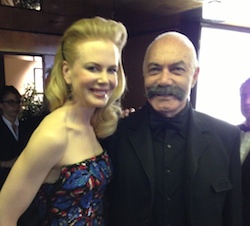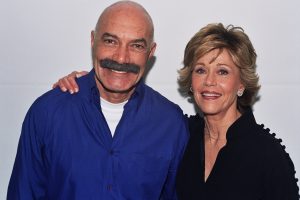With The Dark Knight, Christopher Nolan sought to expand the world of Batman in a literal sense by moving the action from the confines of a soundstage to the expanse of practical locations.
Expanding Film’s Scope
We were looking for ways to expand the scope of this film, so I was determined to take the location filming much further than what we did on Batman Begins, the director says. The real world is built on a scale you could never reproduce in the studio.
Chicago, Chicago
As it had in Batman Begins, the city of Chicago once again became Gotham City. I spent some time growing up in Chicago, Nolan offers, so its a city I know and love. It is famous for its architecture and it is also a very film-friendly city. We shot there for weeks on Batman Begins, but this time we were going to be there for months and the help and encouragement we got from the city was extraordinary.
Producer Chuck Roven confirms, I cant say enough about Mayor Daley, the Chicago Film Office and, most importantly, the citizens of Chicago, who could not have been more excited or more welcoming to us. They gave us total cooperation and allowed us to do some unbelievable things on their streets, and we appreciated and always tried to respect that privilege.
40-Foot Tractor
Inarguably, the most incredible thing the city allowed the production to do was unprecedented: flipping a 40-foot tractor-trailer, end over end, right in the heart of the citys banking district on LaSalle Street. When Chris Corbould saw the truck flip described in the script, he admits, I tried to make compromises with Chrislike maybe the whole truck doesnt go over or maybe we could use a smaller truckbut he wasnt having any of it.
Nolan responds, Finally I turned to him one day and said, Chris, it really ought to be an 18-wheeler. And I know you can find a way to do this because thats just who you are and thats what you do.
The first order of business was to make sure the stunt was even possible. After about six weeks of calculations, we were ready to do an actual test, Corbould recalls. We went out to an open space, got the truck up to speed and pressed the button, and it just sailed over. I had to go to Chris Nolan and tell him it worked perfectly.
Nevertheless, the filmmakers were aware that there was a vast difference between flipping a truck in the middle of nowhere and doing it in the middle of a city street. Before they could carry out the stunt, city engineers were called in to make sure that the tons of force necessary to send the truck end over end would not damage the infrastructure of LaSalle Street, including the various utility lines that run beneath it. Once safe parameters were determined, the production was given the green light.
When the night of the stunt came, the truck flip went like clockwork, earning applause from the assembled cast and crew. It was an impressive thing to watch this truck fly over and land precisely where Chris said it was going to land, Nolan remarks. At the top of its arc, it looked almost like a skyscraper standing there, and then it just continued going over very gracefully. Ive never seen anything like it.
Building Implosion
The films most explosive sequence involved the implosion of an entire building, which was staged at the now-vacant Brachs Candy factory building. Corbould and his crew teamed with the company Controlled Demolition, Inc., headed by Doug Loizeaux, to create the explosion. Corbould offers, Chris didnt want the building to go down like a deck of cards, like a conventional demolition. I worked with Doug, who came up with a system to make the building go down more like a wave, in sequence. Then we added our special effects elements to make it more spectacular.
The main concerns involved surrounding street traffic, as well as active rail lines running nearby the building. The production contacted the railroad companies and coordinated the train schedules to ensure that no trains would be coming through at the time of the explosion. Adjacent street traffic was also blocked to keep onlookers and passersby from getting anywhere near the blast. In addition, the scene called for a bus to be in proximity to the explosion, so polycarbonate sheeting was placed on the windows of the bus to ensure that even if the windows broke, no glass would fly into the bus with cast members inside.
Climactic Car Chase
On location in Chicago, the filmmakers also took advantage of some of the citys defining features, including its world-renowned architecture and multi-leveled streets. Nolan made good use of the parallel upper and lower roadways for the climactic car chase between The Joker, the police and Batman. The breakneck chase sent a variety of cars, armored trucks and one ill-fated 18-wheeler hurtling down such streets as Upper and Lower Wacker Drive, Lower Lower Randolph, Lower Lower Columbus and LaSalle Street. During the chase, the Bat-Pod even takes a side route through the newly remodeled train station under Millennium Park.
The Dark Knight marks Nathan Crowleys fourth film in the Windy City, and the production designer observes, The Chicago architecture is phenomenal; all of the great architects of the last century have worked there. And its wonderfully cinematic.
IBM Building
Crowley chose two buildings designed by famed architect Mies van der Rohe for a variety of sets. The IBM Building was the site of the Wayne Enterprises Boardroom, Harvey Dents office, the Mayors office and the Police Commissioners office, while the lobby of One Illinois Plaza became the main living area of Bruce Waynes new penthouse. Of course, utilizing the lobby level for the penthouse set meant that visual effects would be needed to create top-floor views of the city through the floor-to-ceiling windows. Bruces bedroom was built separately on the 39th floor of Hotel 71 on East Wacker Drive.
Bruce and Alfred have taken up residence in the penthouse because Wayne Manor is still under construction after it was destroyed in a fire. Nolan comments, At the end of Batman Begins, Bruce says hes going to rebuild Wayne Manor brick by brick. That would take a long time, so it would be pretty unrealistic for him to be already moved back in. And there was also a period in the comic books where Bruce Wayne did live downtown in a penthouse, so we took that as a jumping-off point. We wanted to have him in the city because this is very much a story of a city and we felt it was important to put Bruce in the middle of that.
The penthouse was of a decidedly more modern design than Wayne Manor. Crowley explains, We were given access to these great modernist floors, and we felt that era of architecture was better suited for what we were trying to convey emotionally. Its cold and its vacant; theres no warmth to the environment.
Nolan adds, Bruce is living a very lonely existence in a way, so the stark design of the penthouse was meant to reflect his state of mind.
Filming in Chicago also took place at such locations as the Convention Hall at McCormick Place West, which became the vast warehouse of Wayne Enterprises Applied Science Division; Navy Pier, which was the site of a dramatic scene involving the panicked citizens of Gotham City; and the Old Chicago Post Office, which was employed for several scenes, including the opening bank robbery. In addition, the exterior of Chicagos Trump Tower, which was in the early construction stage at the time of production, was used for a pivotal confrontation between Batman and The Joker. The interior of the building framework was carefully re-created in England at Cardingtonthe converted airship hangar that is now used as a soundstagewhere the fight was actually filmed.
Sears Towers
Rising out of the Chicago skyline, the Sears Tower was the site of a soaring exterior shot, and Christian Bale was not going to be denied an opportunity to stand atop the tallest building in the United States. The actor recounts, I overheard my stunt double, Buster Reeves, saying he was heading up to the Sears Tower to do that, and I said, Sorry buddy, no way. I just have to do this one myself. I mean, how often do you get to be 110 stories up, looking out over all of Chicago But its a funny and probably quite dangerous thing, he laughs, how quickly I felt very at home out there and how soon I was able move around right on the edge, looking straight down.
Nolan supported his leading mans decision to grab that once-in-a-lifetime opportunity. Christian likes to challenge himself and I knew we werent putting him in any actual physical danger. It was perfectly safe; it just required guts to stand there. I certainly wouldnt want to do it, but he seemed to enjoy it and it made a beautiful shot for us. And after that, standing out on a ledge on a building in Hong Kong must have been easy.
Hong Kong
The Dark Knight sends Batman to the Far East on a mission to bring down an international financial magnate, who is manipulating Gotham Citys most powerful crime cartels. The scenes were filmed on location in Hong Kong, primarily at the magnificent IFC2 Building, the tallest building in the city. I liked the idea of sending Batman someplace more exotic, says Nolan. We had done that with Bruce Wayne in the first film, before he became Batman, but I really wanted to show the character of Batman outside the realm of Gotham City. I had been to Hong Kong many years ago at a film festival, and remembered it as a great location. Its an incredibly visual place, which makes it ideal in cinematic terms.
For some interiors, the production returned to Cardington, where one major set was constructed: the Bat-Bunker, which has temporarily replaced the Batcave while Bruce and Alfred are living in the penthouse. With its ceiling of solid fluorescent lights, the Bat-Bunker looks like a giant light box, describes Wally Pfister, which obviously made it simple for me from a lighting standpoint.
Crowley notes that as long as his home was in the city, Batman needed a new headquarters. He cant go to his Batcave, so we came up with the idea of a bunker that ties back to the architectural theme of the penthouse in that its vast but very plain. It is essentially a large concrete box where everything comes out of the walls and then goes back. But it still had to be visually interesting. It was all about proportion and perspective, which was actually great fun to do.
Nolan reflects, Every stage of making an enormous film like this presents its own challenges, but has its own rewards. Its very exciting to travel the world and zoom around in helicopters and race the Batmobile around the streets of Chicago. Every now and then, I have to consciously remind myself to take a step back and realize that this is an extraordinary thing I am privileged to be a part of.










